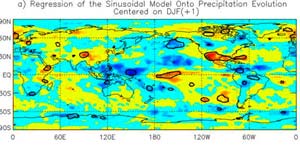Earth Sciences (also referred to as Geosciences), which deals with basic issues surrounding our planet, plays a vital role in the area of energy and raw materials supply.
Earth Sciences comprises subjects such as geology, geography, geological informatics, paleontology, mineralogy, petrography, crystallography, geophysics, geodesy, glaciology, cartography, photogrammetry, meteorology and seismology, early-warning systems, earthquake research and polar research.

There’s a small problem with Earth’s magnetic field: It should not have existed, as Earth’s rock record indicates it has, for the past 3.5 billion years. Motions in the Earth’s molten iron core generate convection currents–similar to boiling water–which produce the field. Many sources of heat drive these currents, but the known sources seem inadequate to maintain the field this long. In 1971 University of Minnesota geology and geophysics professor Rama Murthy theorized that radi

Oil geologists now have a new villain to worry about – the digestive processes of the marine worm.
Clay minerals are the bane of an oil geologist’s life. They sit in pore spaces and block the necks of communication between them, so reducing both porosity and permeability – the two essential characteristics of an oil reservoir, which holds the precious black fluid, like a sponge.
Now, researchers based in Liverpool University have shown that these troublesome minerals are cru

From the air and the ground, scientists this spring and summer will examine some of the world’s largest thunderstorm complexes, behemoths that can spread hurricane-force wind and torrential rain for hundreds of miles across the U.S. Midwest. The study, scheduled from May 20 to July 6, should provide the clearest picture to date of how such storms wreak havoc and how forecasters can better predict trails of storm damage. The Bow Echo and MCV Experiment (BAMEX) is organized by scientists

NASA-funded researchers have discovered El Niño’s soggy secret. When scientists identified rain patterns in the Pacific Ocean, they discovered the secret of how El Niño moves rainfall around the globe during the life of these periodic climate events when waters warm in the eastern Pacific Ocean.
The results may help scientists improve rainfall forecasts around the globe during the life of an El Niño, and may also offer new insights into how an El Niño develops.
The findings were hi

A new study by a University of Colorado at Boulder geological sciences professor suggests one earthquake causing up to 1 million fatalities on Earth each century could occur unless more earthquake-resistant construction materials are implemented.
Professor Roger Bilham’s conclusions are based on a study of the world’s urban population growth in the 21st century, including the number of rapidly expanding “supercities” and their locations close to major fault lines that have caused past tembl

Using a new analysis of satellite temperature measurements, scientists from the Lawrence Livermore National Laboratory have determined that uncertainties in satellite data are a significant factor in studies attempting to detect human effects on climate.
Since 1979, Microwave Sounding Units (MSUs) have been flown on 12 different polar-orbiting weather satellites operated by the U.S. National Oceanic and Atmospheric Administration. MSU instruments measure the microwave emissions of oxygen mo